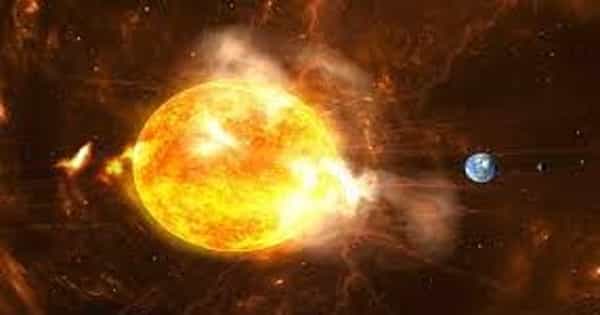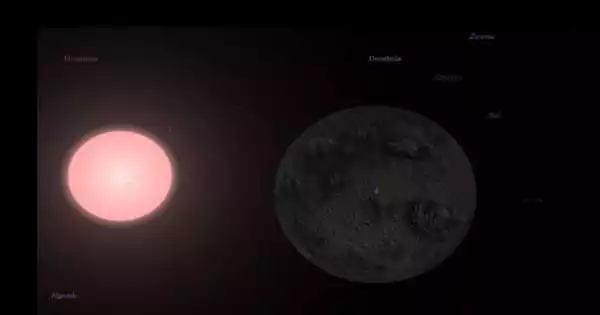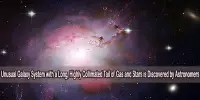A major space weather event could have a disastrous impact on Earth, causing communications and electrical systems to fail. The Frontera supercomputer is being used by researchers to develop new geomagnetic forecasting methods and to improve the Geospace Model used by NOAA for operational purposes. They hope to increase the lead time for space weather events from 30 minutes to 1-3 days, localize space weather forecasts, and estimate uncertainty.
According to Gabor Toth, professor of Climate and Space Sciences and Engineering at the University of Michigan, “there are only two natural disasters that could affect the entire United States.” “One is a pandemic, and the other is a rare occurrence of extreme space weather.”
We’re currently witnessing the first’s effects in real-time. The last major space weather event occurred in 1859. Space weather events that are smaller but still significant occur on a regular basis. These wreak havoc on electronics and power grids, disrupt global positioning systems, shift the range of the Aurora Borealis, and increase the risk of radiation exposure for astronauts and passengers on planes flying over the poles.
“We have all these technological assets that are in jeopardy,” Toth explained. “If an extreme event like the one in 1859 occurred again, it would completely destroy the power grid as well as satellite and communications systems; the stakes are much higher.”
Keeping the Earth safe from space storms. Researchers are using the Frontera supercomputer to develop new geomagnetic forecasting methods and improve the Geospace Model used by NOAA for operational purposes.
The National Science Foundation (NSF) and NASA established the Space Weather with Quantified Uncertainties (SWQU) program in 2020, in response to the White House National Space Weather Strategy and Action Plan and the National Strategic Computing Initiative. It brings together research teams from various scientific disciplines in order to advance the most recent statistical analysis and high-performance computing methods in the field of space weather modeling.
“We’re always improving our models,” Toth explained. The new model supersedes version 1.5, which has been in use since November 2017. “The main difference in version 2 was the refinement of the magnetosphere’s numerical grid, several algorithm improvements, and a recalibration of the empirical parameters.”
The Geospace Model is based on a global representation of the Earth’s Geospace environment, which includes magnetohydrodynamics — the properties and behavior of electrically conducting fluids like plasma interacting with magnetic fields, which plays an important role in the dynamics of space weather.
The Geospace model forecasts magnetic disturbances on Earth caused by geospace interactions with the solar wind. These magnetic disturbances generate a geoelectric field, which can damage large-scale electrical conductors like the power grid.

The model’s short-term advanced warning provides forecasters and power grid operators with situational awareness about harmful currents, giving them time to mitigate the problem and maintain the integrity of the electric power grid, according to NOAA’s announcement at the time of launch.
Despite its sophistication, the Geospace Model only provides about 30 minutes of advance warning. Toth’s group is one of several working to reduce lead time to one to three days. This entails comprehending how activity on the Sun’s surface results in events that can have an impact on Earth.
“Right now, we’re using data from a satellite measuring plasma parameters one million miles from Earth,” Toth explained. Researchers hope to begin with remote observations of the Sun’s surface, specifically coronal mass ejections, which produce flares visible in X-rays and UV light. “This occurs early in the day on the Sun. We can then run a model to predict the arrival time and impact of magnetic events.”
Improving the lead time of space weather forecasts necessitates the development of new methods and algorithms that can compute far faster than those currently in use and can be efficiently deployed on high-performance computers. Toth develops and tests these new methods on the Frontera supercomputer at the Texas Advanced Computing Center, which is the fastest academic system in the world and the 10th most powerful overall.
“I think I’m pretty good at developing new algorithms,” Toth said. “I use these in space physics, but many of the algorithms I develop are more general and not limited to a single application.” Toth made a significant algorithmic improvement by discovering a novel way to combine the kinetic and fluid aspects of plasmas in a single simulation model. “It has previously been attempted and failed. But we managed to make it work. By inventing smart approximations and algorithms, we can go a million times faster than brute-force simulations “Toth stated.
Based on the simulation results, the new algorithm dynamically adapts the location covered by the kinetic model. The model identifies areas of interest and directs the kinetic model and computational resources to them. This can result in a 10 to 100-fold increase in the speed of space weather models.
Toth and his team have been working on making the Space Weather Modeling Framework run efficiently on future supercomputers that rely heavily on graphical processing units as part of the NSF SWQU project (GPUs). They set out to port the Geospace model to GPUs using the NVIDIA Fortran compiler and OpenACC directives as their first goal.
They recently achieved real-time performance on a single GPU by running the entire Geospace model. To achieve this milestone, they used TACC’s GPU-enabled Longhorn machine. To run the model at the same speed on a traditional supercomputer, at least 100 CPU cores are required.
Toth stated that it took a year of code development to make this happen. “The goal is to run a set of simulations quickly and efficiently in order to provide a probabilistic space weather forecast.” This type of probabilistic forecasting is critical for another aspect of Toth’s research: localizing predictions in terms of impact on Earth’s surface.
“Should we be concerned only in Michigan, or also in Canada? What is the maximum induced current that a specific transformer will see? How long will the generators have to be turned off? To do this correctly, you’ll need a model you trust “He stated. “Whatever we predict, there will always be some degree of uncertainty. We want to provide precise probabilistic predictions, similar to terrestrial weather forecasts.”
For each simulation, Toth and his team run their code in parallel on thousands of cores on Frontera. They intend to run thousands of simulations over the next few years to see how model parameters affect results, in order to find the best model parameters and assign probabilities to simulation results.
















